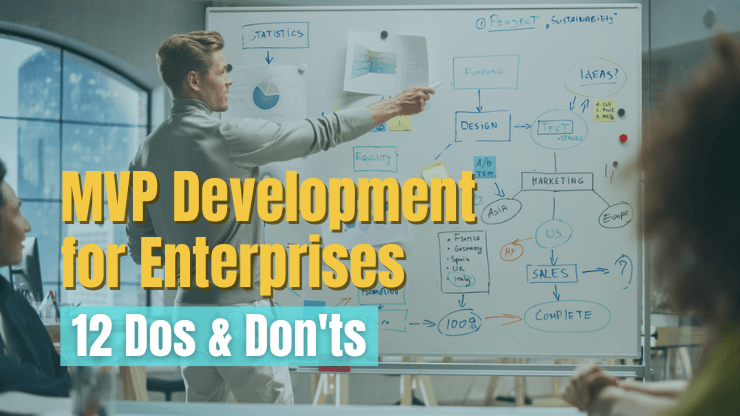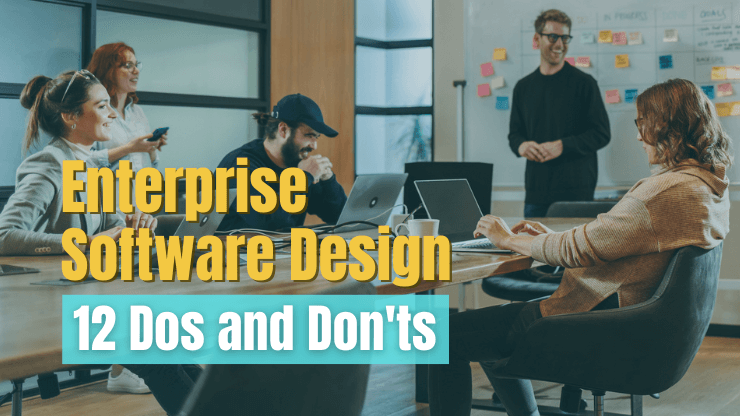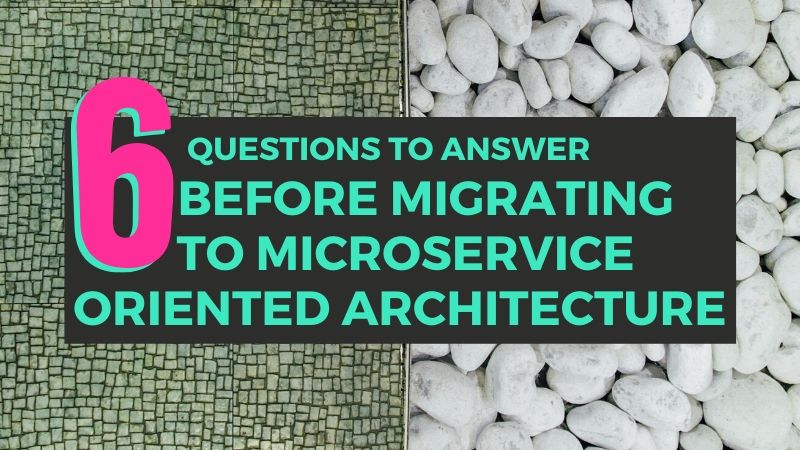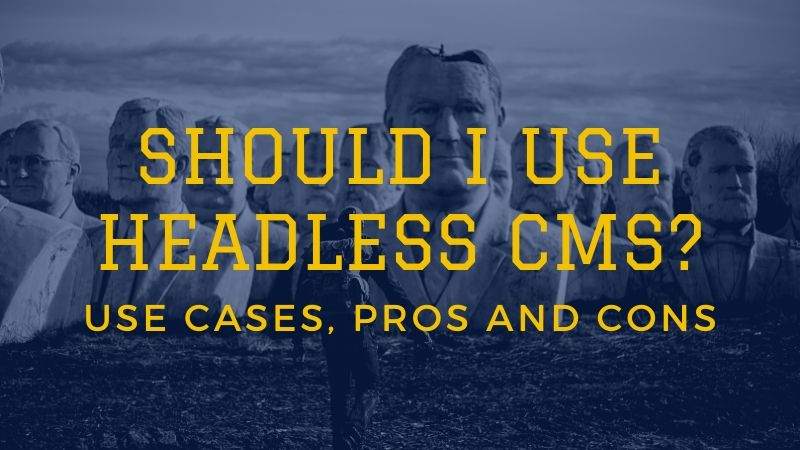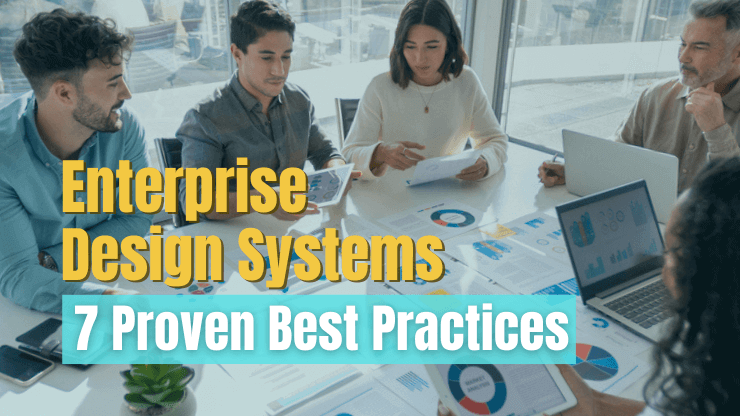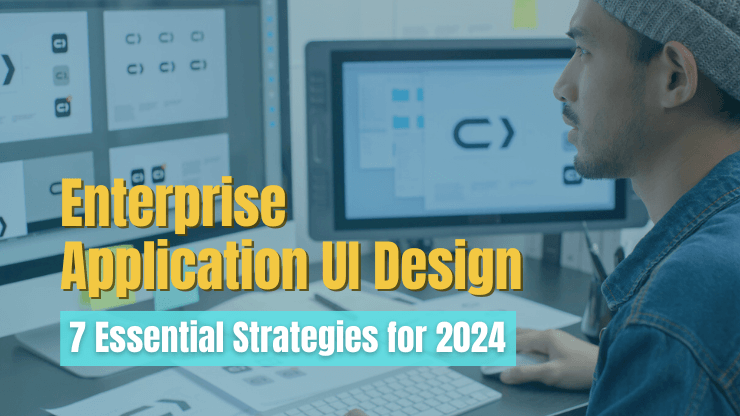Building an MVP is all about speed. The quicker your product reaches real users, the faster you can validate your concept, gather vital feedback, and drive essential improvements. Yet, for enterprises, embracing the MVP process can be a challenge. The agility, flexibility, and rapid pace demanded by MVP development don't always align with the conventional enterprise environment.
In this comprehensive guide, we will equip you with the strategies, insights, and best practices needed to navigate enterprise MVP development successfully, so you can deliver exceptional software and stay competitive.
Why are enterprises considering the MVP process?
In the realm of enterprise software development, traditional long-cycle methods have long been the norm. These approaches, often characterized by exhaustive planning, extensive stakeholder consultations, and protracted development timelines, have posed several formidable challenges. Enterprises dedicating years to crafting the 'perfect' piece of software based on assumptions and stakeholder input often find themselves building products that do not align with actual user needs and preferences - or worse yet - find themselves entirely outpaced by more agile competitors.
Recognizing the limitations of this outdated model, enterprises are increasingly turning to the MVP development process, which promises faster time-to-market, reduced risk, and a more customer-centric approach to software development.
How MVP development differs for enterprise vs. startups
The MVP software development approach for enterprises, though inspired by the methodologies used by startups, inherently differs in several key aspects. Understanding these distinctions is crucial for navigating an MVP software development project within an enterprise environment with greater precision and confidence. Recognizing the unique challenges and opportunities that come with enterprise-level MVP software development will enable you to tailor your strategy to meet the specific needs and constraints of larger organizations, ensuring a more successful and efficient rollout of new software solutions.
Let's look at the key differences:
| MVP Development for Enterprise | MVP Development for Startups | |
|---|---|---|
| Definition | Scaled-down versions of a customer-facing product or an internal solution aimed at a specific business unit. | Basic version of a product with just enough features to be usable by early customers. |
| Scope | The scope is expansive, encompassing intricate features that necessitate integration with existing systems and adherence to company policies. | The scope is narrow, centered on core features that address a direct user need. |
| Budget | Larger budget to support developing, integrating, and rigorously testing a premium application. | Lean budget, emphasizing cost-efficiency throughout the development process. |
| Timeline | Longer timeline to allow for detailed planning, coordination, and multiple stages of review and approval. | Rapid development cycle to enter the market swiftly, validate ideas, and obtain feedback. |
| Risk Tolerance | Enterprises are generally risk-averse, often showing reluctance towards untested technologies and concepts. | Startups are more inclined to embrace risk, experimenting, and dealing with uncertainties as part of their growth process. |
| User Base | Usually crafted for a specific, defined user group, whether internal or external to the organization. | Typically intended for a wider, less known audience of early adopters. |
| Feedback Process | The feedback mechanism is comprehensive and methodical, involving numerous internal and external stakeholders. | Startups prioritize direct user feedback, which is collected through dynamic means such as product testing, surveys, and early adopter engagement. |
| Regulatory Compliance | Enterprise MVPs must conform to specific industry regulations and data protection protocols, introducing additional layers of complexity and extending the development timeline. | While startups may initially enjoy greater leeway regarding regulations, they must progressively confront compliance demands as their user base and data holdings expand. |
MVP development for enterprises - Do's

It's clear that MVP development in the enterprise environment is a complex endeavor. To succeed, you must navigate this path with precision and insight. In this section, we'll guide you through six strategies that will help ensure your enterprise MVP development is on track to deliver value and drive innovation within your organization:
Narrow down your feature set
Enterprise applications are often complex, but that doesn't mean that the feature set can't be narrowed down. When embracing an MVP approach to development, the key to success lies not in the quantity of features, but in the precision and quality of a carefully selected core feature set that will continue to allow people to do their jobs well. To select the right feature set consider:
- The application you are replacing. Whether internal employees or external customers, people rely on enterprise software to do their job, and they can't simply switch to another software tool with ease. For this reason, it's critical to consider what features are present in the existing software and how you will successfully replace or maintain them.
- The motivations of your users. In an enterprise environment, you likely have a captive audience, one you can understand deeply. Use this valuable resource to understand what would motivate your users to adopt the new software and even what would frustrate them or disrupt their workflows.
- The realities of your enterprise workflows. In most cases, it's simply not realistic to release "unfinished" software, but maybe it is realistic to replace and upgrade core sets of functionality. Regardless of the scale of work, you can still embrace an "MVP mindset" to stay as lean as possible.
PRO TIP: Engaging with end-users early in the development process through effective market research ensures that the MVP aligns closely with the actual needs and pain points of its users. A few ways to collect practical input are:
- User interviews with customers: Conducting one-on-one interviews with external clients or customers provides personalized insights into their needs and expectations. This guides the development of external software to better meet market demands.
- Internal focus groups: Organizing internal focus groups to collect feedback from employees ensures the internally focused software meets the diverse needs of different departments.
- Surveys and questionnaires: Distributing surveys to both internal stakeholders and external clients gathers broad quantitative data, informing feature development and improvements in the MVP for both internal and external software solutions.
Read More: Custom Enterprise Software Development - 7 Tips for Success
Be thorough in your planning
Careful planning and scoping of your MVP stand as the bedrock upon which successful, scalable, and impactful solutions are built. For enterprises, where the stakes are inherently higher and the ecosystems more complex, this planning phase transcends basic preparatory work; it becomes an essential strategy for aligning diverse stakeholder expectations, integrating multifaceted system requirements, and navigating the intricacies of enterprise-level challenges.
Here's how to refine the planning process for clarity, effectiveness, and alignment:
- Clarify the MVP's purpose: Define the primary objectives and expected outcomes of the MVP clearly. This should articulate what success looks like and how it aligns with broader business goals.
- Map stakeholder influence: Catalog all stakeholders, detailing their roles, expectations, and the extent of their decision-making authority. Understanding the influence each stakeholder has ensures their needs are adequately addressed and prioritized.
- Assess team impact: Identify all internal and external teams involved in or affected by the MVP development project and final product. Outline their contributions, how the project impacts them, and strategies for maintaining operational continuity.
- Strategize risk mitigation: Conduct a thorough risk analysis to highlight potential hurdles in the project's path. For each identified risk, develop a robust mitigation strategy, detailing preventive measures and contingency plans.
PRO TIP: After initial planning and alignment work, a detailed SOW should be prepared. Typically, this will be done in partnership with the internal software development team or external MVP development company. Detail the MVP's scope by specifying functional and non-functional requirements. This should include what the MVP will and will not cover, ensuring all parties have a clear understanding of the project's boundaries and deliverables.
Read More: Software Development Scope of Work [Template, Tips & Tools]
Build a strong partnership

To succeed in early project planning as well as throughout development, the MVP team must prioritize building strong partnerships within the enterprise. It's not just about engaging in transactions or navigating through a series of mobile and web development phases; it's about investing in solid relationships that bridge the gap between technical teams and business stakeholders within your organization.
Fostering strong partnerships within your enterprise can:
- Establish a foundation of trust and mutual understanding, ensuring that project objectives, challenges, and feedback are shared openly and efficiently between technical teams and business stakeholders.
- Streamline the approval processes and reduce bureaucratic delays, as stakeholders with strong relationships are more likely to provide prompt and favorable responses, allowing for quicker adjustments and project advancements.
- Enable smoother transitions and adjustments to project scopes, technologies, and strategies by ensuring all parties are aligned and supportive of necessary changes, thus minimizing disruptions and maintaining project momentum.
- Strengthen the likelihood of achieving desired outcomes by aligning all involved parties towards common goals, fostering a collaborative environment that is responsive to feedback and adaptive to market needs.
Start with a proof of concept
When navigating the MVP development process within your enterprise, the journey can often feel daunting, especially for those new to this approach. To mitigate risks and ensure a smoother transition, consider starting with a proof of concept (PoC).
A proof of concept is essentially a small-scale, low-risk, and cost-effective project aimed at validating the feasibility and potential of your concept. This initial step offers a host of advantages, including:
- Early risk identification: Through the lens of a PoC, you gain invaluable insights into the project's early risks. This knowledge arms you with the foresight needed to proactively address challenges.
- Securing internal support: Demonstrating a tangible PoC can be instrumental in garnering internal support. It effectively communicates your vision, rallying stakeholders and team members behind your endeavor.
- Refining MVP scope: One of the critical benefits of a PoC is its ability to help you refine the scope of your eventual MVP. By assessing the PoC's outcomes, you can strategically narrow down and prioritize core functionality for your MVP, ensuring its alignment with your core objectives.
Choose quality over speed
The temptation to accelerate development processes can be strong, especially in a competitive market landscape. However, prioritizing speed at the expense of quality can lead to significant long-term costs, including compromised security, reduced user satisfaction, and ultimately, a diminished return on investment. Enterprises should embrace a more deliberate pace, one that ensures precision and robustness in their minimum viable products:
- Don't compromise on user needs: In the enterprise environment, there is not room to partially satisfy user needs; users must be completely satisfied for the software to be accepted. Central to all discussions about quality should be surrounding usability and user satisfaction.
- Implement a phased testing approach: Begin with unit tests and progress to integration and user acceptance testing, ensuring each component works seamlessly both independently and within the larger system.
- Conduct regular security audits: Schedule and adhere to frequent security assessments throughout the development cycle, identifying vulnerabilities early and implementing fixes before they become critical issues.
- Invest in quality assurance resources: Allocate sufficient resources to quality assurance teams and tools, recognizing that this investment pays dividends in reducing post-launch issues and maintenance costs.
Maintain a flexible roadmap
While it is critical to build a robust MVP in the enterprise environment, it's still critical to acknowledge the value that an iterative, flexible approach can provide. Traditional long-cycle planning may resist change, but the essence of MVP lies in iteration and feedback incorporation. To achieve this, keep your roadmap adaptable while you build an MVP:
- Challenge assumptions: Be unafraid to challenge your initial assumptions about the product's direction. Actively seek opportunities to question and reassess your preconceptions in light of new insights and emerging market trends.
- Disseminate user input widely: Share user input and feedback beyond just the product team. Engage stakeholders from across the organization, including marketing, sales, and customer support, to ensure that they understand and champion the strategic changes driven by user insights. This collaborative approach not only enhances product alignment but also secures buy-in for broader business goals.
- Stay agile: Adopt agile methodologies that facilitate flexibility and rapid iteration. By staying agile, you can adapt your roadmap swiftly to changing circumstances, ensuring that your MVP remains dynamic, responsive, and competitive in the market.
MVP development for enterprises - Don'ts
![]](/uploads/blog/mvp-development-for-enterprises/mvp-development-for-enterprises-donts.png)
Now that we've explored the essential "dos" of MVP development in an enterprise environment, it's equally crucial to understand what not to do. Avoiding common pitfalls and misconceptions is key to ensuring the success of your MVP journey. In this section, we'll delve into the critical "don'ts" that you should be mindful of, providing valuable insights to help you navigate the challenges effectively. Let's dive in.
Rush the feedback phase
In an enterprise environment, the cycle times are longer and the process of gathering feedback may need to go through multiple levels of management. While it may be tempting to try to rush through this process as quickly as possible, it's important to take the time to gather insight from each stakeholder group - management, the business unit, users, etc.
This commitment to gathering feedback throughout development is fundamental to the MVP process and will allow you to achieve greater business value in your final product.
To do this, we recommend you:
- Broaden your feedback pool: Resist the temptation to rely solely on a small group, such as the leadership team, for feedback. While their insights are valuable, it's essential to cast a wider net. Include various stakeholders, internal teams, and, if possible, external users who represent your target audience. This may mean stepping outside of normal feedback channels; if you need to challenge the system, now's the time to do so!
- Consider internal launch: In some cases, especially for internal software solutions, rushing to an external release can lead to missed opportunities for improvement. Consider starting with an internal launch. This approach allows you to get eyes on the MVP within the organization, helping to identify issues, gather feedback, and make necessary improvements before external release.
- Select curated testers: For projects targeting external users, consider selecting a curated group of testers. This group might include loyal clients, early adopters, or advocates who are more likely to provide constructive feedback. Work with your sales team to identify customers who may be open to providing candid feedback.
PRO TIP: User observation tools like Heap are invaluable for systematically tracking user interactions with early low-fi wireframes as well as more robust prototypes. By consistently analyzing user input and behavior in this way, you can make informed adjustments to your roadmap, shaping a more responsive and successful MVP.
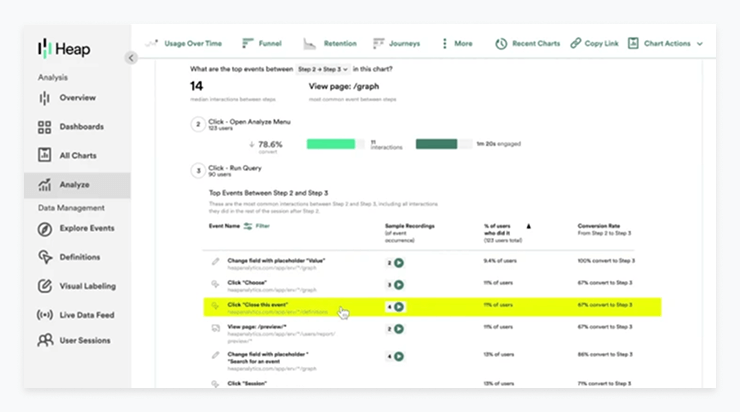
Minimize the risk of technical debt
The development of a minimum viable product often revolves around speed, agility, and delivering essential features swiftly. In this journey, enterprises may find themselves tempted to overlook an issue that can silently accumulate and wreak havoc in the long run: technical debt. Technical debt encompasses shortcuts, suboptimal coding practices, and deferred maintenance that can compromise the integrity of an app's codebase. While technical debt may not be immediately evident in the rapid MVP development phase, its relevance becomes strikingly clear as the app progresses and evolves. Ignoring technical debt can have significant consequences:
- Long-term maintainability: Failing to address technical debt can lead to a codebase that becomes increasingly difficult and costly to maintain as the app evolves beyond the MVP stage.
- Performance and scalability issues: Technical debt can result in performance bottlenecks and scalability limitations, hindering the app's ability to handle growth effectively.
- Security vulnerabilities: Neglecting security considerations can expose the app to vulnerabilities that may be exploited later, posing risks to user data and compliance.
Ignore established patterns and processes
Consider the purpose and functionality that the minimum viable product is designed to fulfill. Is it aimed at replacing or upgrading an existing software tool, thereby modernizing how users currently manage specific processes? Understanding how users are already navigating these tasks is crucial. It's important not to overlook the established workflows and practices.
Paying close attention to the existing methods of operation ensures that the new tool complements and supports the core activities critical to the business's success. This approach mitigates the risk of user pushback and integration challenges, as it acknowledges and builds upon the foundation already in place. By prioritizing a development strategy that respects and enhances current processes, while also paving the way for future advancements, you can facilitate the smooth incorporation and broad acceptance of the MVP within the company's operational framework.
To ensure the MVP not only fits into but also elevates the existing infrastructure, companies should prioritize the following steps:
- Conduct a thorough analysis: Before MVP development begins, a comprehensive understanding of the current systems and processes is crucial. This ensures the MVP complements and augments the existing setup without causing disruptions.
- Engage internal users and stakeholders: Involving users and stakeholders from the onset as part of the market research is essential. Their feedback and insights help tailor the minimum viable product to meet real user needs and align with broader enterprise objectives, smoothing the path for its adoption.
- Utilize existing data: Leveraging data from current systems to spotlight inefficiencies allows for targeted development efforts. This focused approach maximizes the MVP's impact by addressing the most critical areas for improvement.
Try to please every stakeholder
Attempting to please every stakeholder can lead to scope creep, delays, and an MVP that lacks focus. While stakeholder input is valuable, it's essential to strike a balance between various interests and priorities. Trying to accommodate every stakeholder's request can result in an overly complex MVP that deviates from its core objectives. Instead, consider these strategies:
- Limit the scope: Avoid building something overly complex that tries to solve the needs of every department and stakeholder. Narrow in on a more specific focus to keep the MVP streamlined and user-centric.
- Establish clear ownership: Identify project owners who are involved in the decision-making process. Setting boundaries for decision-makers helps streamline the development process and prevents unnecessary complexities.
- Involve key stakeholders early: Seek input from IT, marketing, and other relevant teams early in the project's definition phase. Their insights can help you define the MVP more effectively and align it with broader business objectives.
Fail to plan for scalability
In the enterprise environment, scalability is a critical consideration that should not be underestimated during MVP development. While the primary goal is to deliver essential features rapidly, it's equally important to assess how your product will handle increased user demands as it gains momentum within a large organization. Neglecting scalability planning can lead to performance issues, system downtime, and a suboptimal user experience as your solution is adopted by more teams and users across the enterprise.
Ensure that scalability requirements are thoroughly evaluated from the outset, and that your architecture and infrastructure are designed to effortlessly accommodate the anticipated growth. This foresight will save your enterprise from costly and disruptive scalability challenges in the future.
Ignore the complexity of legacy systems
In an enterprise environment, it's difficult to escape needing to interface the new software with legacy systems. Ignoring or downplaying the challenges posed by legacy system integration can lead to unrealistic expectations and hinder the successful implementation of minimum viable product strategies.
Acknowledge the reality of legacy system complexities and assess the extent to which they can be integrated with MVP strategies. Not all projects allow for pure agility, and some may require a more cautious approach.
- Foster collaboration between IT teams, developers, and business stakeholders to ensure a holistic understanding of legacy system challenges and their impact on the MVP app development.
- Develop a clear integration strategy that accounts for the intricacies of legacy systems. This includes identifying potential bottlenecks, compatibility issues, and resource constraints that may affect MVP development.
- Develop a comprehensive data migration strategy when dealing with legacy systems. Determine how data will be transferred, transformed, and validated to ensure a seamless transition to the MVP. Address data quality and compatibility issues proactively to avoid data-related roadblocks during integration.
Conclusion
MVP development for enterprises offers a strategic pathway to innovate rapidly while addressing the unique challenges and complexities of larger organizations. By adhering to the outlined do's and avoiding the don'ts, enterprises can successfully navigate the MVP process, ensuring their products are both impactful and aligned with user needs. This balanced approach facilitates quicker market entry, enhanced product-market fit, and sustained competitive advantage in the evolving digital landscape.
If you're looking for MVP development services, our Enterprise Web Application Development Company will partner with you to build a comprehensive strategy to meet your business needs. We'll assist you in selecting the most suitable technologies, seamlessly integrating them into your existing tech stack, and delivering a user-ready, enterprise MVP.

